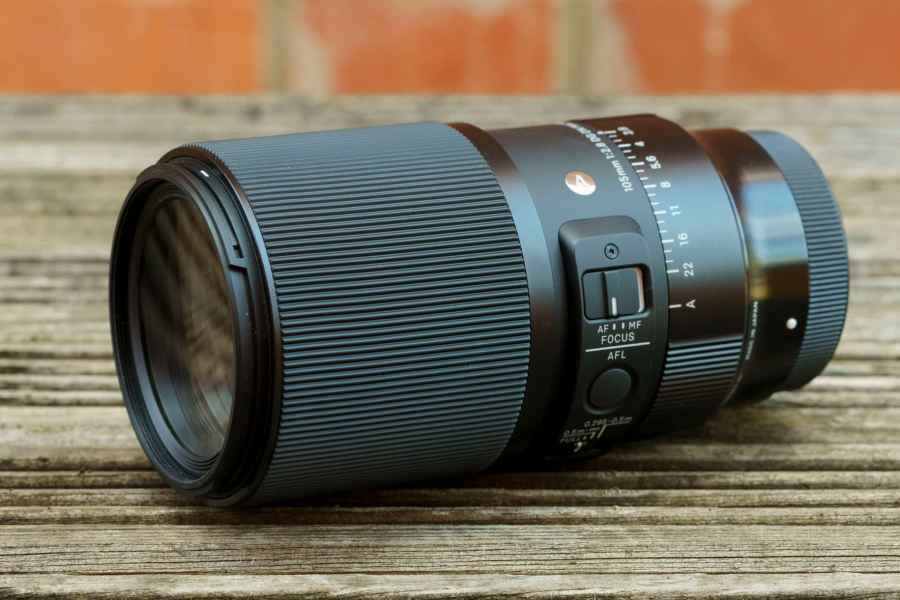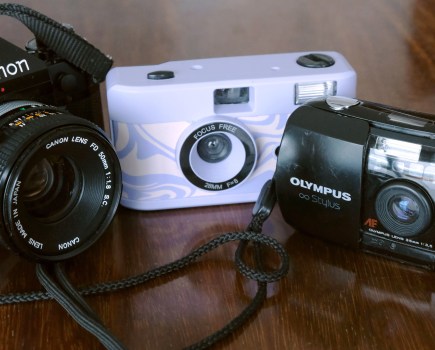Since its announcement in 2011, Sigma’s 105mm f/2.8 EX DG OS HSM Macro lens has featured in just about every macro lens recommendation list. It’s a widely respected optic that’s available in a range of mounts at a more affordable price than the comparable options from the main camera manufacturers.

The Sigma 105mm F2.8 DG DN Macro Art is available in L-mount and E-mount for £699
However, it was designed when DSLRs were the primary focus and now, with mirrorless camera sales taking the lead, Sigma has gone back to the drawing board to recreate it for this new breed. And so the 105mm F2.8 DG DN Macro Art is born.
It’s available with either the L mount for Leica, Panasonic and Sigma cameras, or in Sony’s E-mount.
Sigma 105mm F2.8 DG DN Macro Art: Features
While the older SLR lens has 16 elements in 11 groups, Sigma has arranged 17 elements in 12 groups for this new optic. This includes one SLD (special low dispersion) element to minimise chromatic aberrations while the Super Multi-Layer Coating that is applied to some elements is designed to suppress flare and ghosting. In addition, there’s a water- and oil-repellent coating on the front element to help it shed water droplets and fingerprints.
Macro photographers who like to venture outdoors to capture their subjects in situ will also appreciate the fact that the 105mm F2.8 DG DN Macro Art has seals around each joint and moving part to keep out dust and moisture.
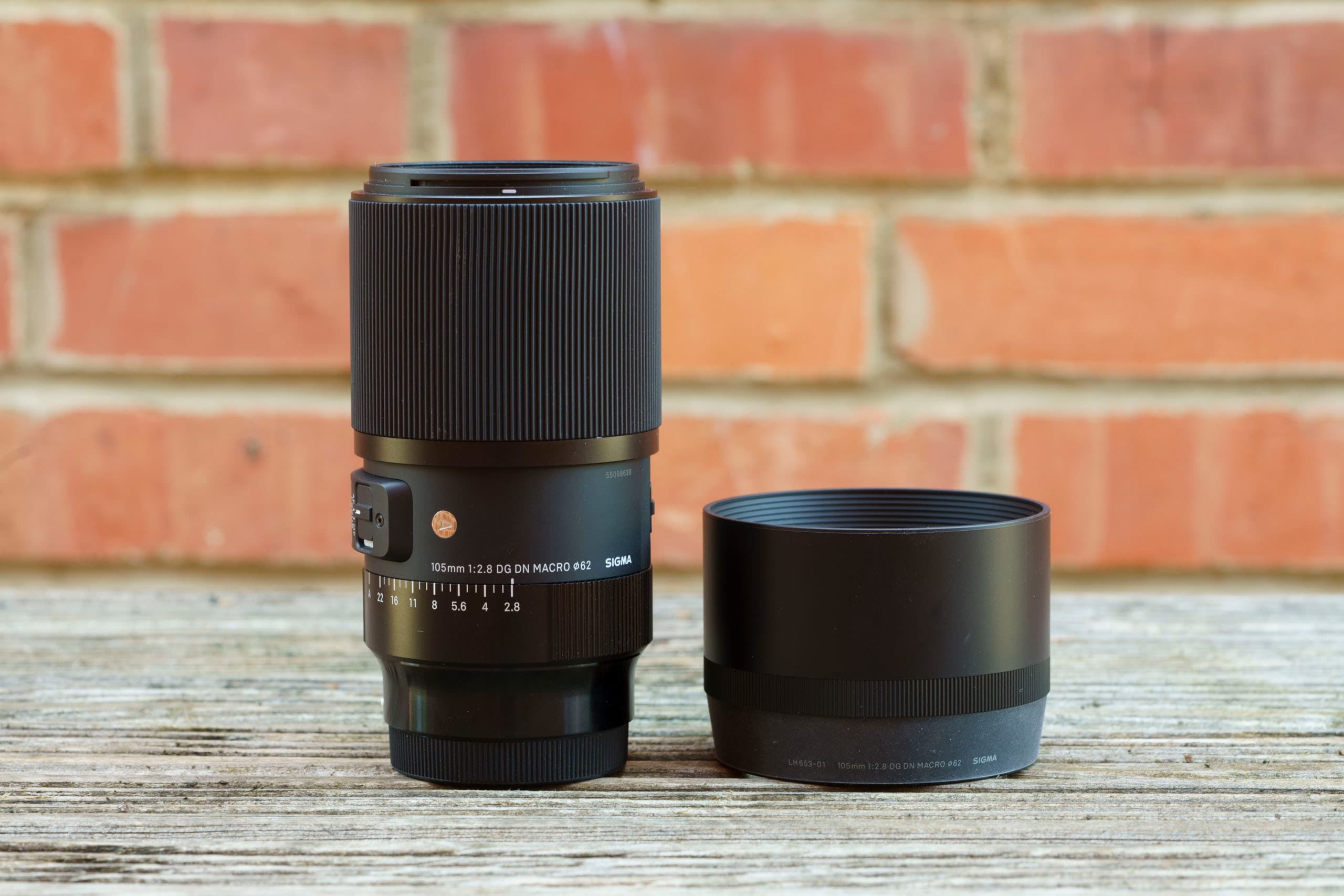
The lens is supplied with Sigma’s LH653-01 lens hood
While macro photography can often entail focusing manually, the lens employs Sigma’s Hyper Sonic Motor (HSM) which uses ultrasonic waves to move the focusing group when the autofocus system is engaged. The focusing is internal, so that the lens doesn’t change length during focusing and nor does the front element rotate.
That first point is standard while the latter is important when graduated or polarising filters are used, because any rotation would impact upon the filter’s orientation. Polarising filters are of particular value with wet or shiny subjects in macro photography, as they can cut down reflections and enhance the colour.
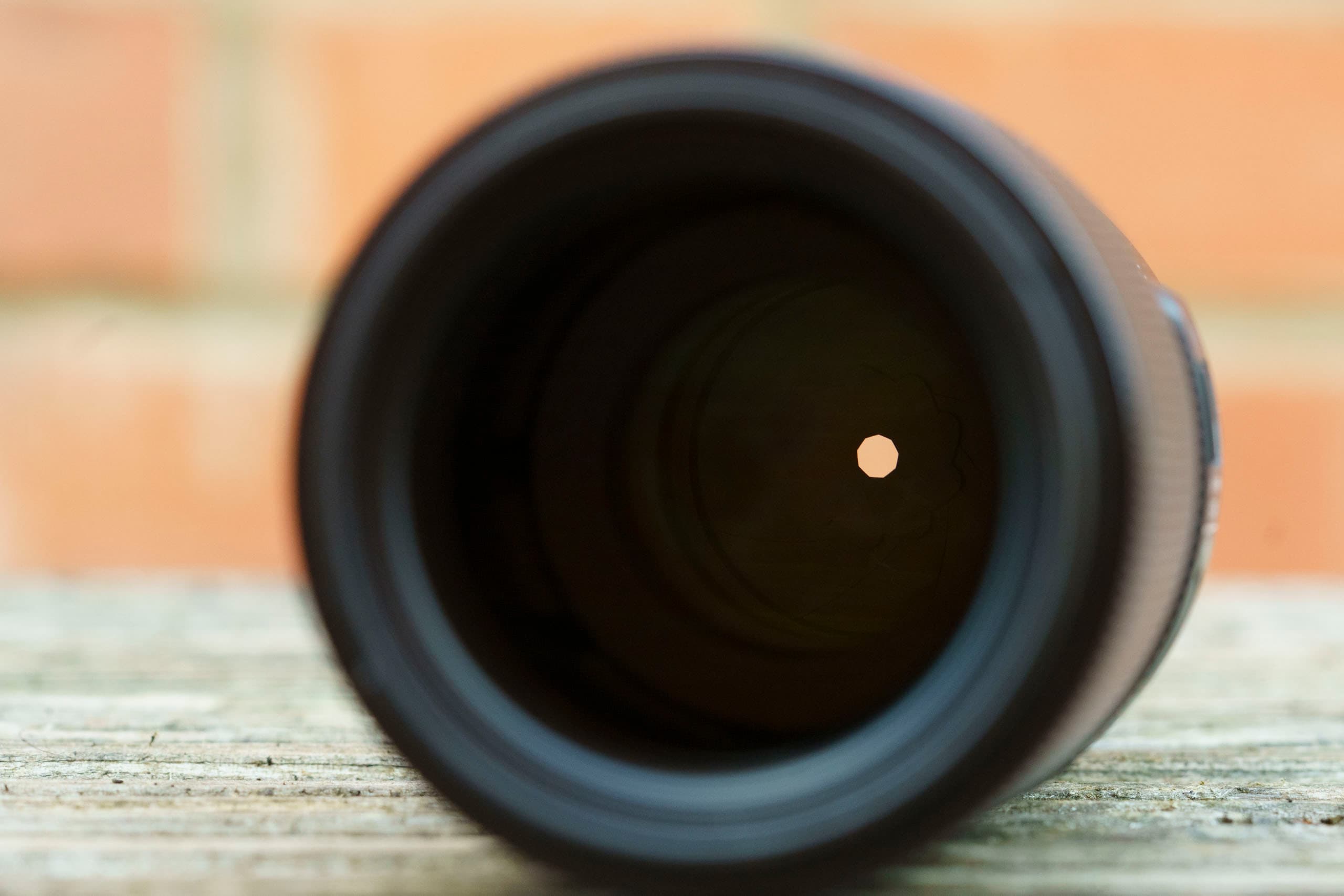
The lens features 9 diaphragm blades in its construction
At the closest focusing distance of 29.5cm the working distance is 14.1cm, which enables natural light to reach the subject and gives it some breathing space. The L-Mount version is also compatible with Sigma’s two new teleconverters: the 1.4x TC-1411 (£369) and the 2x TC-2011 (£399). These provide 1.4:1 and 2:1 magnification ratios respectively, while maintaining the 14.1cm working distance. But sadly, there’s no sign of them becoming available in E-mount.
Unlike the older Sigma 105mm lens, the new 105mm F2.8 DG DN Macro Art has an aperture ring. This has markings in 1/3EV steps running from f/2.8 to f/22. There’s also an ‘A’ setting that can be selected to enable the camera to set the aperture value automatically or when you want to use a camera dial to select the aperture setting.

Aperture settings are clearly marked on the barrel in white. The aperture ring can be de-clicked
Sigma has given the aperture ring click-stops which provide haptic feedback as it’s rotated. However, there’s also a switch that enables the ring to be ‘de-clicked’ by videographers looking to avoid recording operational sounds and photographers who perfer a smooth action.
Sigma 105mm F2.8 DG DN Macro Art: Build & Handling
Sigma’s Art lenses are the company’s top-end optics and the build of the 105mm F2.8 DG DN Macro Art fits in with our expectations of that level. It looks smart and business-like and feels well-made.
Interestingly, at 74mm in diameter and 133.6mm in length, the new lens is 4.3mm narrower and 7.2mm longer than the older 105mm macro lens, and at 715g, it weighs 10g less. It’s also considerably smaller and lighter than the ‘bokeh-master’ Sigma 105mm f1.4 DG HSM (non-macro lens) which measures 115.9mm in diameter, 131.5mm in length and weighs a hefty 1.645Kg.
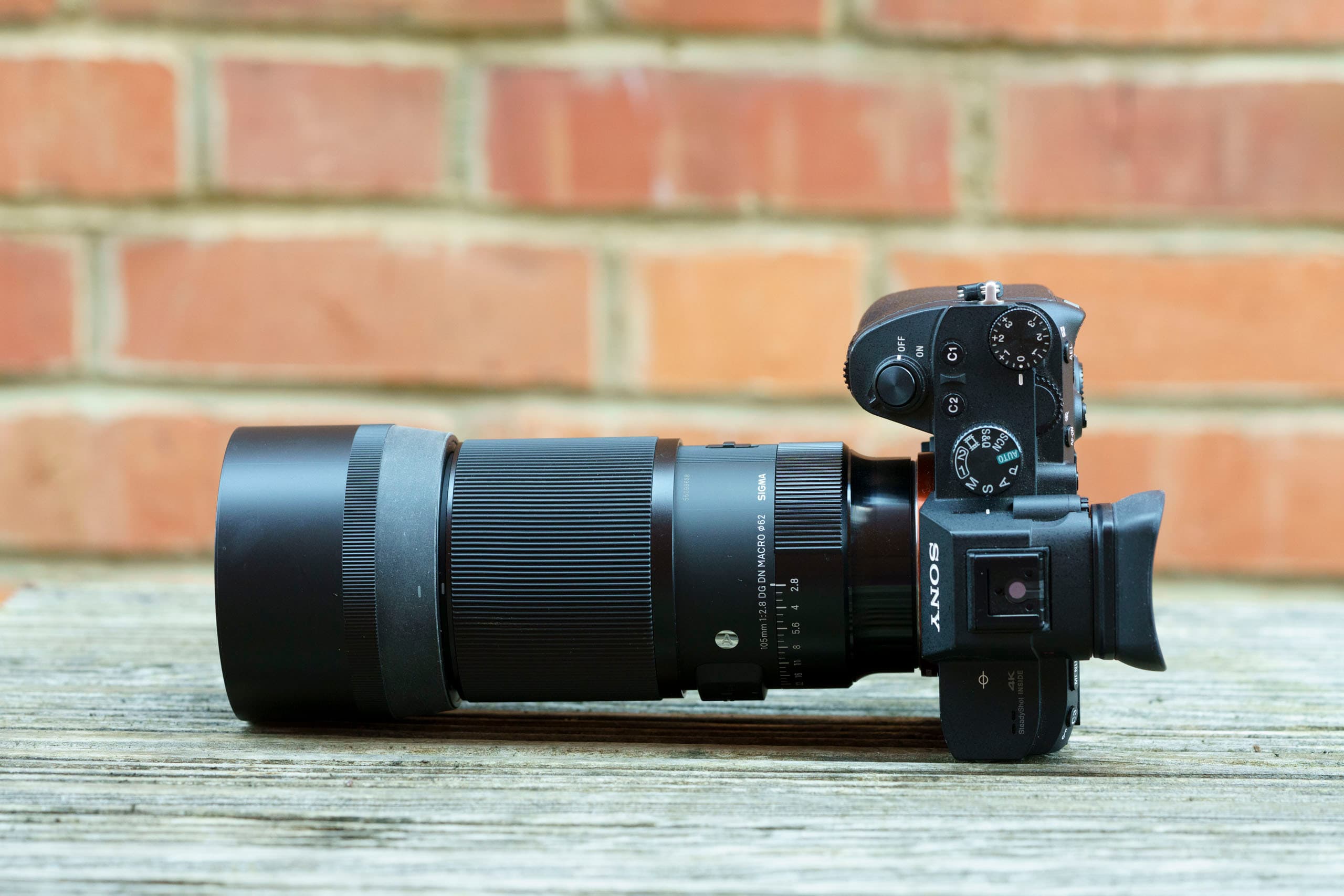
The new lens is 4.3mm narrower and 7.2mm longer than the older 105mm macro lens
While the aperture ring sits close to the lens mount, the broad focus ring is at the far end of the lens. It has a lovely action, feeling very smooth and precise. It requires pressure from one finger or your thumb to rotate it to the correct position.
Including the click control, the 105mm F2.8 DG DN Macro Art has three switches and a button on its barrel. Sensibly, the click control sits at the 6 o’clock position on the barrel, so it’s unlikely to get in the way or be used accidentally, but it’s easy to find when you need it.

The manual focus ring has a smooth and precise feel when it’s rotated
Working up from the bottom of the barrel, on the left side of the lens as you hold it for use, the focus limiter switch is the next in line after the click control. This has three settings to determine the focus distance range of the lens, full, 0.5m to infinity and 0.29m to 0.5m. That last setting is of particular help for macro photography, as it prevents the camera’s autofocus system from getting distracted by objects in the background beyond the intended subject.
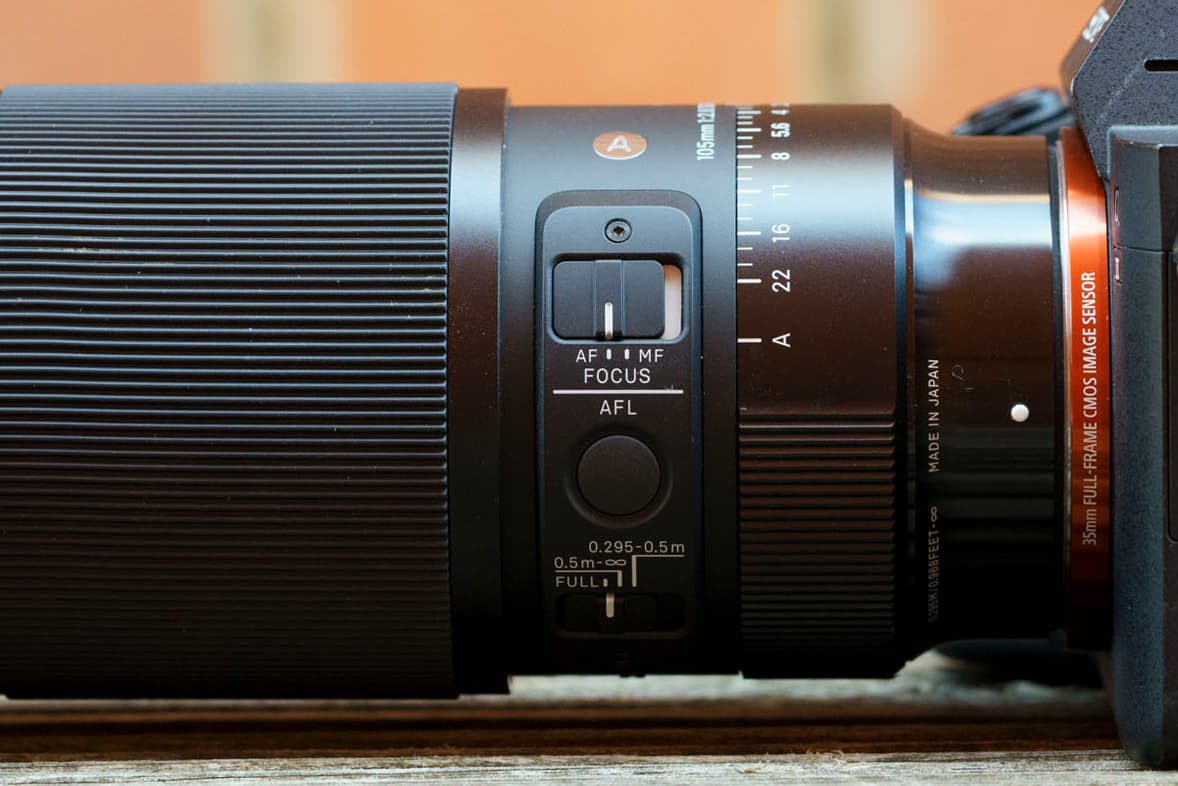
A close up showing the autofocus lock (AFL) button below the AF/MF switch
Above the focus limiter switch, at the 3 o’clock position on the barrel, is a customisable autofocus lock (AFL) button. This is perfectly positioned for pressing with your left thumb while you shoot. It’s handy if the camera is in continuous AF mode and you want to stop the focusing momentarily. However, Sony cameras offer a long list of alternative features that can be accessed via this button. On option that’s particularly useful for macro is the ‘Focus Magnifier’ that enables checking the focus without rotating the focus ring when the lens is set to manual focus.
Higher up on the lens barrel, above the focus lock button, there’s the AF/MF switch. When this is set to MF, rotating the focus ring prompts the Sony A7R IV to display a distance scale and a magnified view of the area under the focus point.
Sigma 105mm F2.8 DG DN Macro Art: Autofocus
I tested the Sony E-mount version of the Sigma 105mm F2.8 DG DN Macro Art on the Sony Alpha 1 and the Sony Alpha 7R IV cameras. This means that I used it with one of the best (if not the best) autofocus systems currently available and generally, the focusing is nippy and assured.
However, as is often the case, it slows a little as the subject gets close and there is sometimes a bit of hunting. This hunting is reduced by using the focus limiter and there were only a few occasions when I felt the need to switch to manual focusing.
Sigma’s HSM focusing system is quiet but it’s not quite silent, which means a remote microphone is likely to be required if it’s used for recording video with ambient sound.
Sigma 105mm F2.8 DG DN Macro Art: Image quality
Even when the aperture is wide open, the Sigma 105mm F2.8 DG DN Macro Art captures very sharp images. In fact, when examining identical images shot at different aperture settings, I was unable to see much, if any, increase in sharpness as the aperture was closed down from f/2.8 to f/4, f/5.6 or f/8.
Closing down to f/22, the smallest available aperture, naturally results in slight softening as result of diffraction. But it’s minimal and often an acceptable trade-off for getting sufficient depth-of-field with close-ups, so I’d be perfectly happy to use the lens at any of its aperture settings. The detail is also maintained well into the corners of the frame with only a slight drop.
If the in-camera correction profiles are turned off, a keen eye may spot slight corner shading and the merest hint of pincushion distortion. However, neither is problematic and the correction profiles, which can also be applied when processing raw files in Adobe Camera Raw or Lightroom, deal with the issues very well.
Chromatic aberration is also controlled extremely well with only very mild examples appearing occasionally, and these are easily dealt with post capture. In addition, out-of-focus areas look smooth and natural with no aberrations apparent in the circular highlights.
Sigma 105mm F2.8 DG DN Macro Art: Verdict
Despite not having optical stabilisation built-in, at £699, the Sigma 105mm F2.8 DG DN Macro Art is almost twice the price of the 105mm F2.8 Macro EX DG OS HSM. That’s a significant slice of cash, which might be enough to convince some photographers to use the older optic with an adapter for their mirrorless camera. However, the newer model is an excellent lens that’s capable of delivering superb results, while also having the benefit of being weather-sealed.
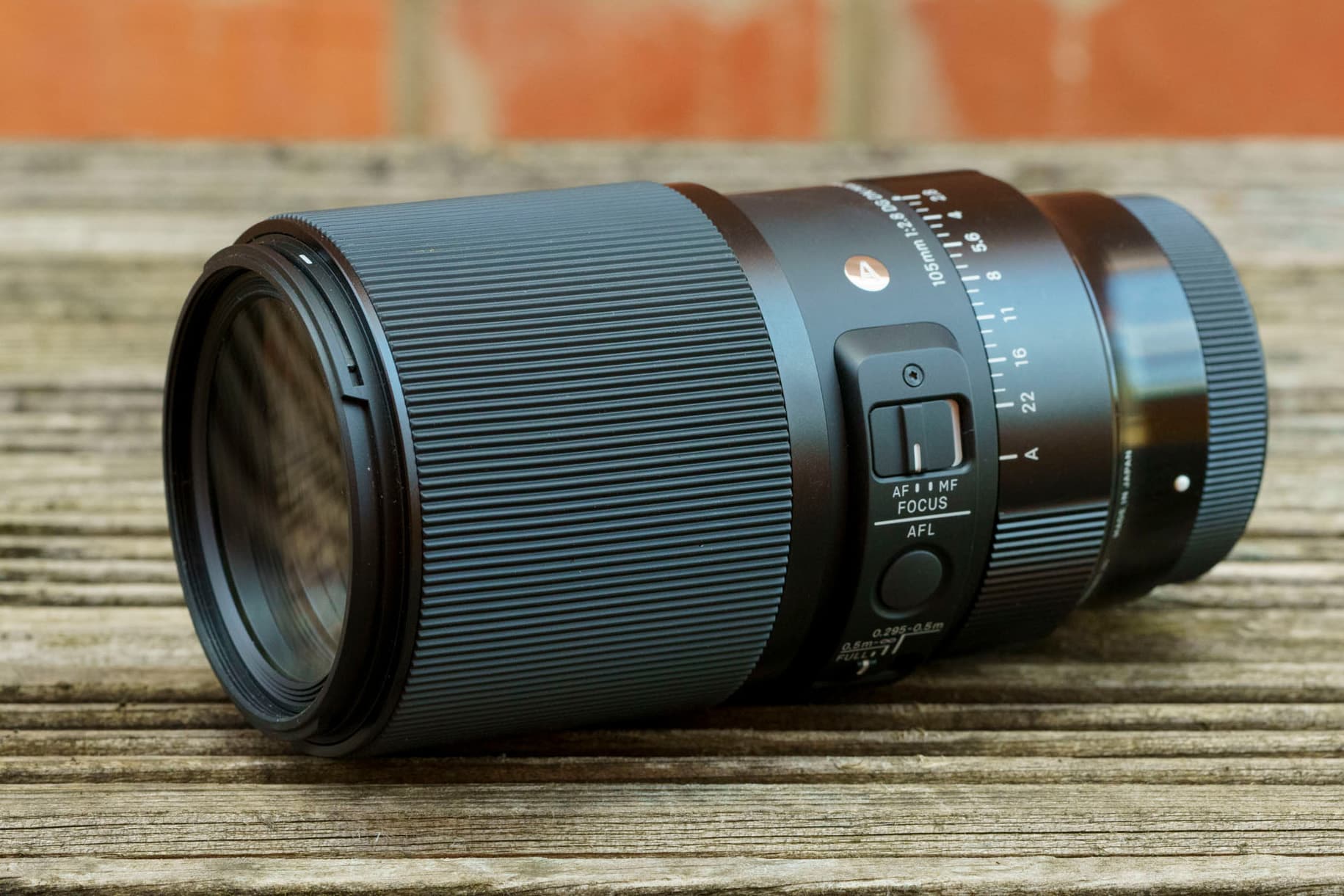
The Sigma 105mm F2.8 DG DN Macro Art picks up a maximum five stars and AP’s Gold Award
The addition of an aperture ring is a particularly nice touch. I find it connects me more closely with my photography than a camera dial, and it seems especially appropriate for macro photography. However, it’s good that there’s the option to use the camera’s dial as some photographers may not be happy to change their way of working when they swap lenses.
Sigma’s Art lenses have a strong reputation and the this new macro slips right in, seeming a logical addition to the range bearing in mind the popularity of the older version. However, it’s disappointing that the company hasn’t introduced it in a wider range of mounts that better reflects the mirrorless market. Neither it nor the older 105mm macro lens are available in Nikon Z or Canon RF mount, for example, and Fujifilm and Micro Four Thirds photographers are largely ignored.


